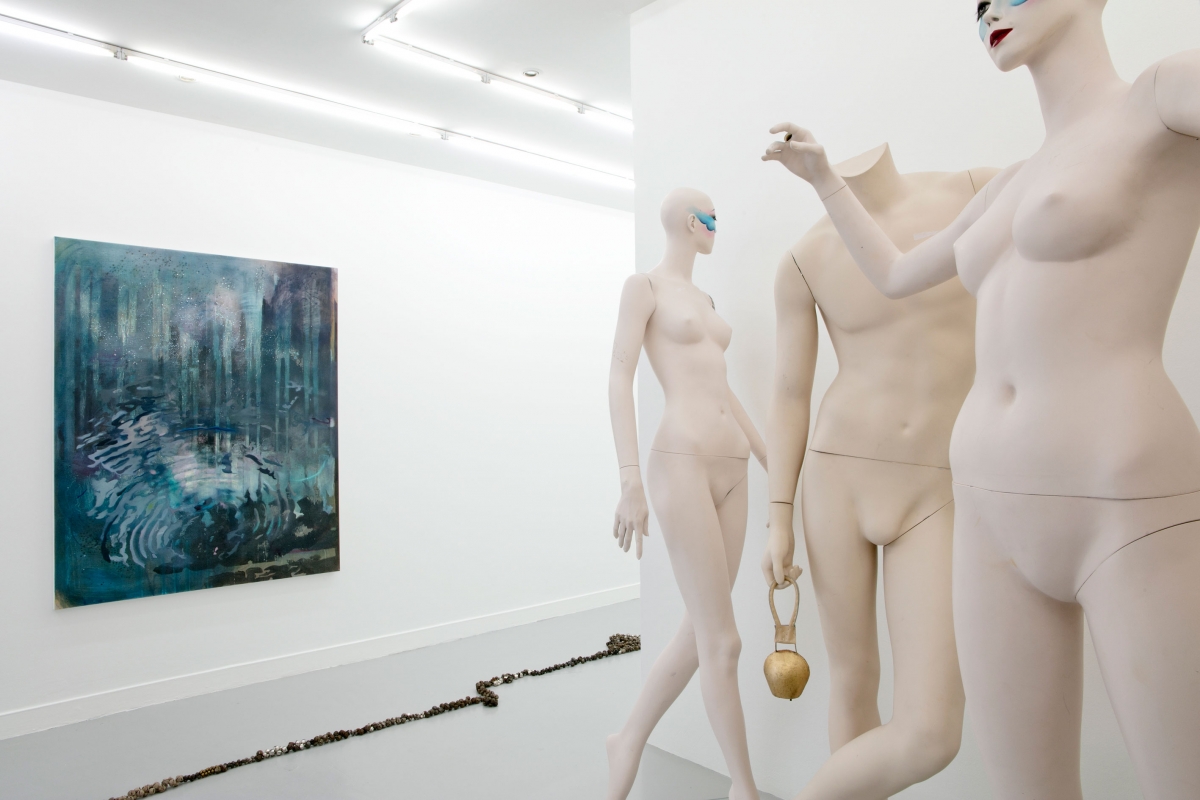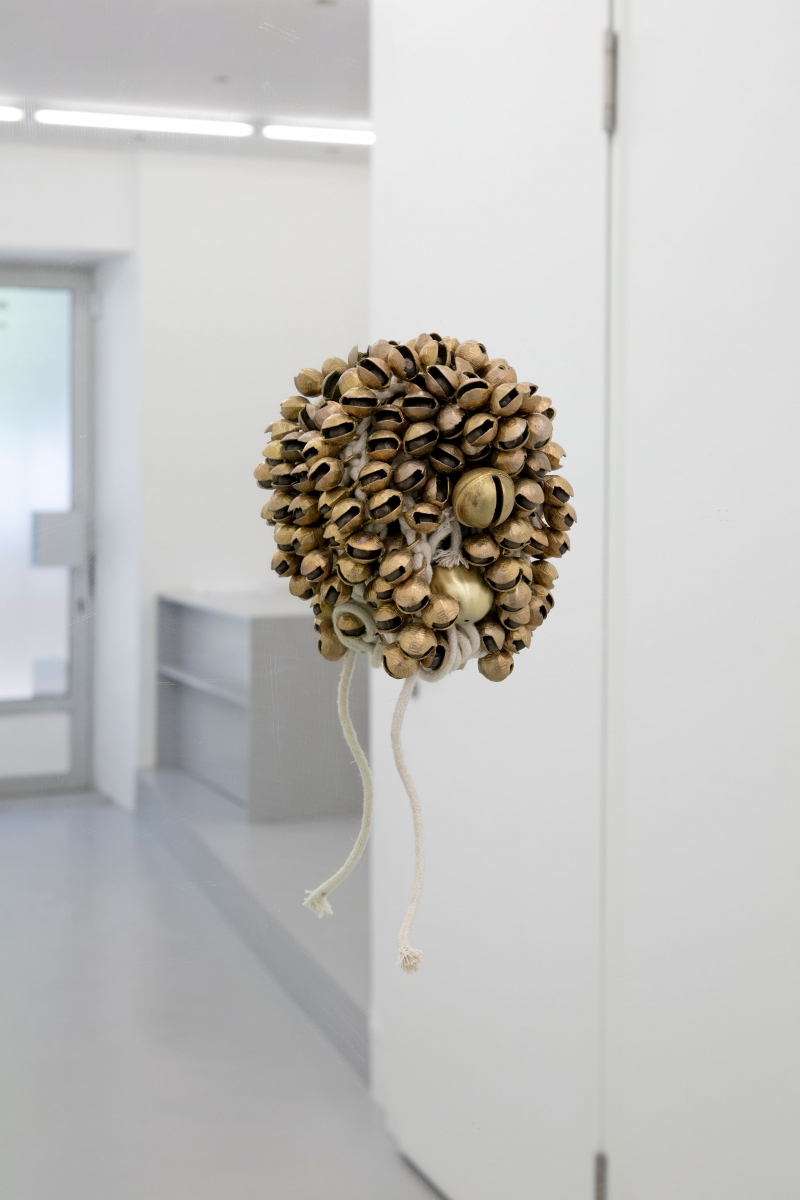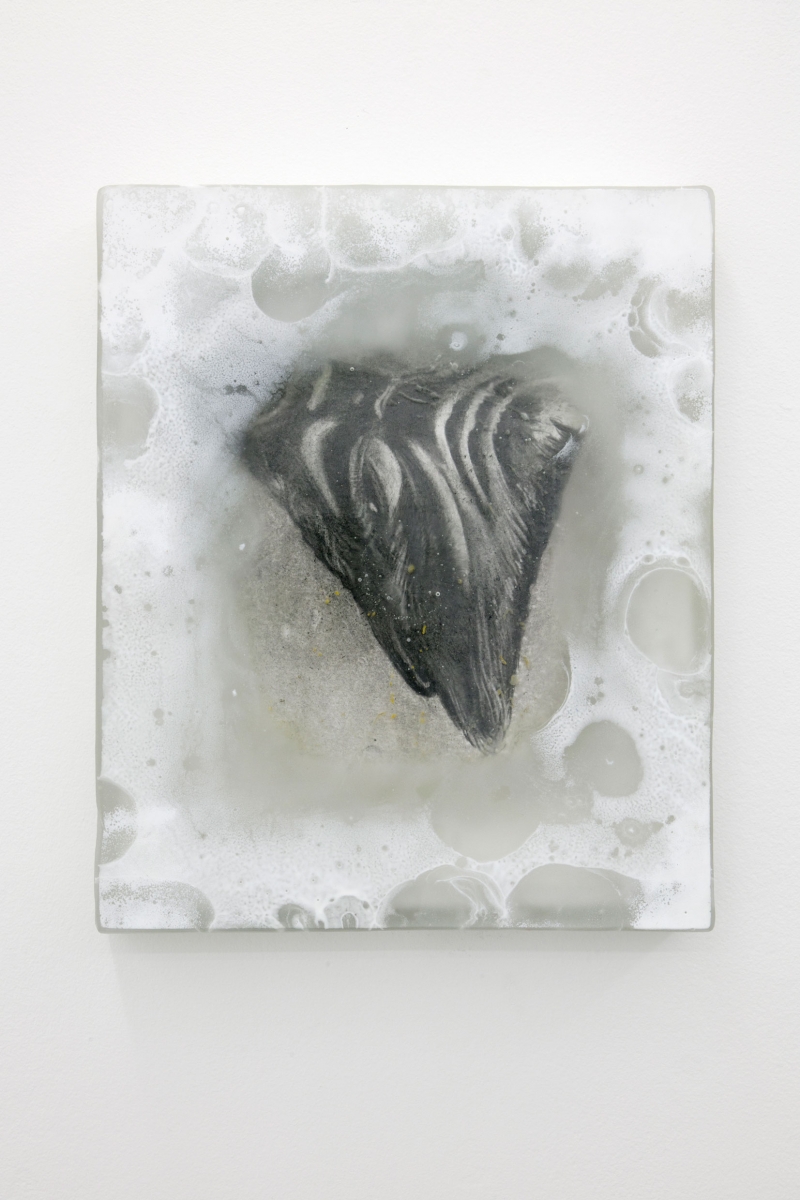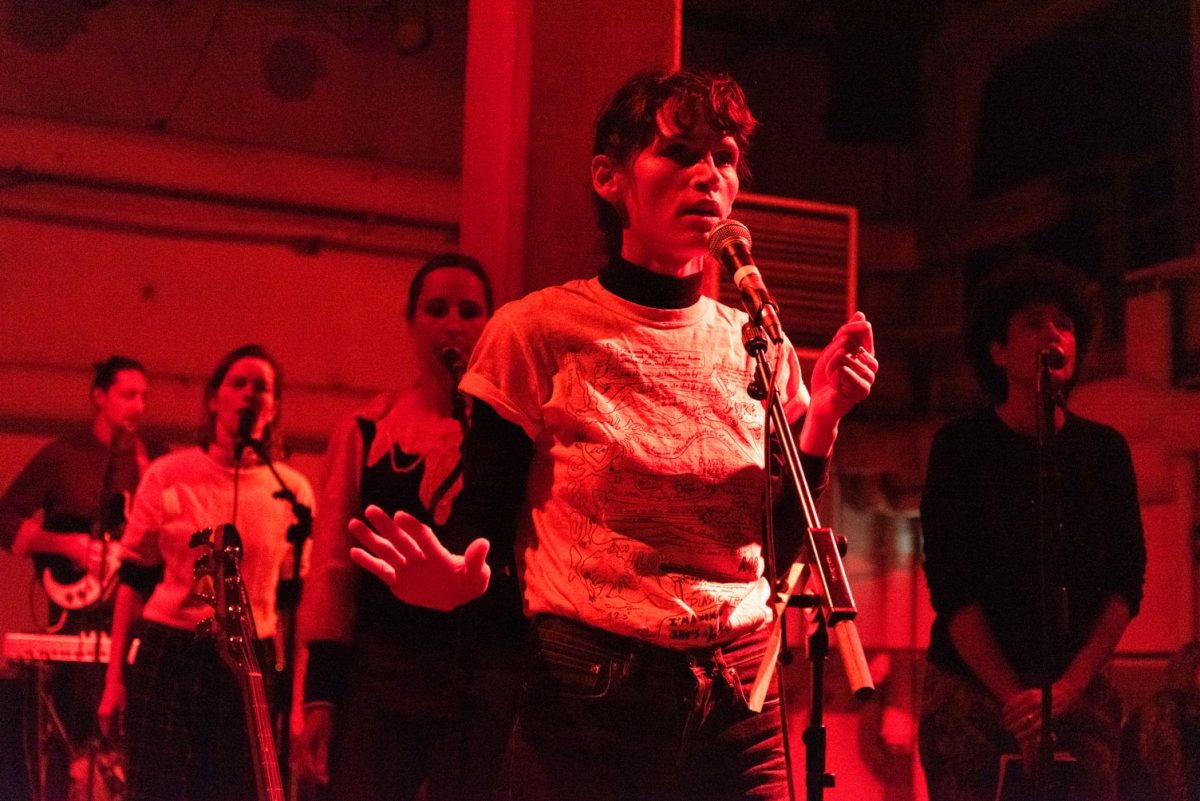1.
It’s a foggy December morning. To alleviate a splitting headache, I drink cup after cup of coffee at the counter of Le Bastringue. The person I’m meeting is late – it’s out of character. I plunge my hand into the pocket of my jeans to check whether I have enough money for my drinks. I take out a few coins (not enough), a handful of bells, and a piece of blue paper, which, once smooth, turns out to be a flyer for a Shrouded & Marmelade concert, held the day before at Le Lavoir Public. I tinkle the little bells, wondering how they got there, and leave the premises.
2.
Along a cobblestone street, I glimpse two posters on which the name of the band appears once again, among others. Maybe it’s actually a festival? But it could correspond to the track list of an album being advertised. An address is mentioned, so I go there to get to the bottom of it.
3.
Once there, I understand that the poster is for an exhibition and that this is a list of its artworks and sequences – even if the band is indeed a band. Because the artist is also a musician. I also learn that he dreams of exhibitions that act like a living formation, with each work complementing the whole while also following their own path. Here, it is a solo show “in several rooms”, he specifies, although I only see one. I note that the mirror located at the back of the space creates a doubling effect and an illusion of depth.
4.
The room in which I find myself is called Le Village Lanterne. With a frozen look, like ice cubes, a set of glass cases are detached from the walls in an elegant display. Their skilfully wrought surface evokes the irregularities of old glass windows or the gesture of evaporating condensation. We’re all familiar with the shared history that connects painting and windows. But they are also reminiscent of the use of vaseline on Guy Maddin’s camera lenses or in Robert Altman’s dystopic film Quintet. Here, temperature – some kind of meteorology – is the focal point. Glass, after all, is something hot that produces something cold, a molten material that freezes into the memory of a process. This plasticity is also characteristic of the image fragments (studio offcuts and li’l monsters) emerging from clear zones. Everything is in flux. A cryogenic freak show that attempts to escape the “thing” that instrumentalises them. Formal echoes that are woven between glass bubbles, reflections and motifs eventually establish a purely optical system. The village lanterns turn out to be magical. I approach the one next to the mirror and everything shifts.
5.
In the first room, the artist welcomes me with open arms: “it’s wonderful that you’ve come back to see the exhibition!” I do not recognise the space, but I remember a discussion we’d had a few months earlier. He was talking about a popular parade, a massive get-together and dance train line, to finally be over and done with social distancing. Only the intriguing and casual ballet of a group of shop-window mannequins with striking blue makeup remains of the parade idea. Adorned with the same colour, the mediator problematises this inanimate little scene by providing a supplement of (in)carnation and all the masterful power of makeup. “The mannequins are like McGuffins1 that collapse once named, but this blue gesture remains,” the artist intimates. On the floor, a long braid of little bells is laid out like a silent sound sculpture or a drawing within the space. A visceral thing, a deletion. It contains the promise of vibration, rhythm, an emancipatory party, set to a Maloya tune. On the wall, a painting evokes a wave spreading across the surface of the water. “It is that of a frog that I heard in the heart of the city of Aubervilliers, where I work. Its reverb is here, you can touch it.” I approach the pile of little bells fixed on the mirror and grab it.
6.
As the first notes resonate and the choir soars, I try to take stock. I’m thinking of the term “prehension”, defined by Whitehead as a “perception without cognition” incorporating certain aspects of the thing perceived. I think I understand that no living thing governs its own interconnectedness. All is cosmos. The artist interrupts me: “The body doesn’t wait for you to train it like a metronome. I got this from Milford Graves, a great master of rhythm. If there are discrepancies between each beat, it means your heart is healthy.”
I listen to the concert without concerning myself with the future or its atomic clock.
Notes
- Alfred Hitchcock’s definition of this term comes to mind, which he gave at a conference at Columbia University in 1939: “It’s the driving element that appears in any scenario. In stories of theft, it is almost always a necklace, and in spy stories it’s inevitably a document.” It’s an object, a character, an event that serves as a springboard, as a pretext for the plot, but very often later turns out to be anecdotal.








